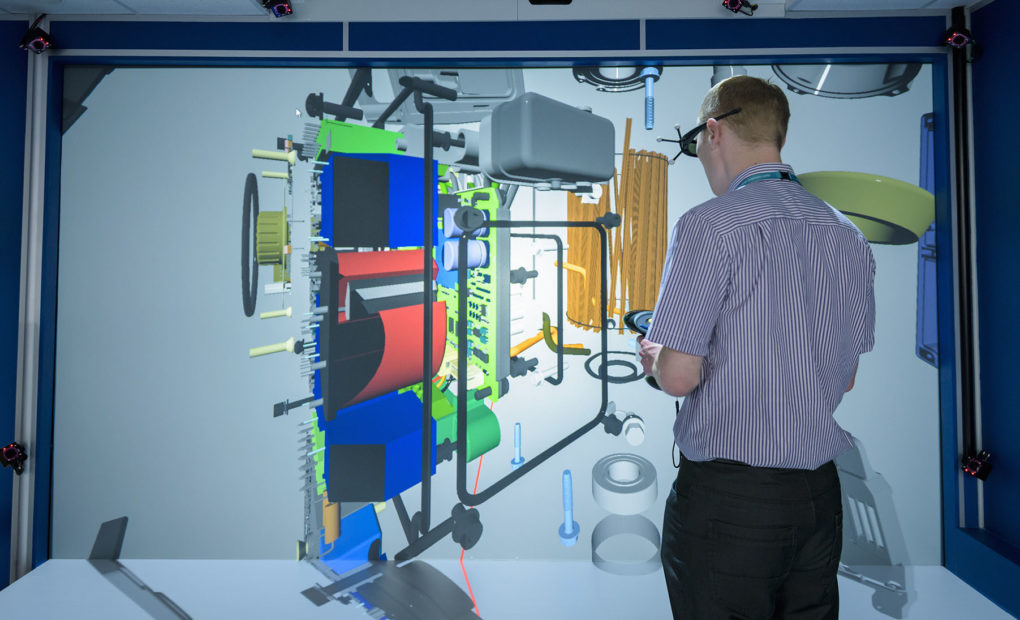
5 Practical Uses of VR
VR has certainly ridden the wave of the Gartner Hype Cycle over the past few years, but with the tech heavyweights of Facebook, Amazon and Google throwing their hats into the ring, ever-improving headsets and a wider range of virtual experiences available, VR seems to be on its way to mass adoption.
As VR grows in popularity, so does its potential. Gaming & advertising were the two early adopters of VR, but now creatives & businesses are beginning to explore how VR can be put to practical use in sectors such as Healthcare and Education. Below, we discuss 5 of the most interesting practical uses of virtual reality emerging today.
Recruitment
One of the most popular ways that VR is being practically applied in business is in the recruitment of employees. VR allows companies to promote the role and tell their business’ story & values in a unique and engaging way. With ever increasing competition in the jobs sector, a VR experience like this enables an employer to stand out from the crowd.
VR also offers the chance for individuals to experience an immersive “Day in the Life” scenario, where they can see what a day in that role would look like. Finally, VR is being used to assess these candidates, putting them in purpose-created scenarios where recruiters can analyse how a candidate may handle potentially difficult situations, whilst also assessing their skillset and decision making.
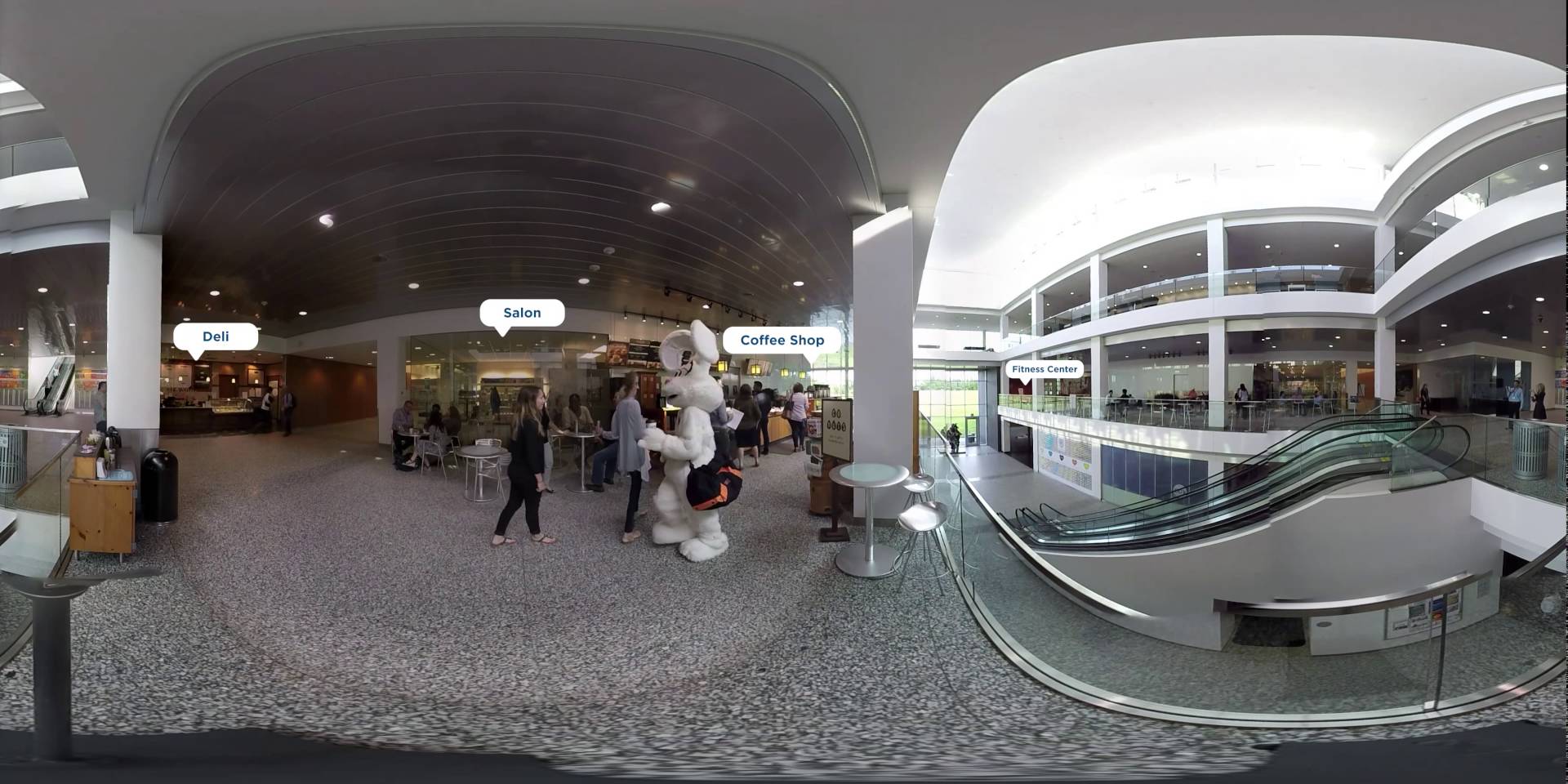
General Mills give candidates a tour of their headquarters in VR
Training
As well as being applied to recruit employees, VR is also being used to train them. To help combat the difficulties that workforce training often poses – from safety concerns to the resource-draining issue of creating complex training scenarios – companies are turning to VR to help.
VR eliminates these obstacles because it can immerse employees in educational, risk-reduced work scenarios. This is particularly useful for workforce training that involves a high level of risk such as combat scenarios or construction work as trainees are able to learn valuable skills and procedures in an engaging and safe environment.
From public speaking and hands-on training to decision making and crisis management, employees can gain integral skills, knowledge and experience without having to travel long distances or sit in repetitive, tedious presentations. Explore our VR in Training industry page to find out more about this application.
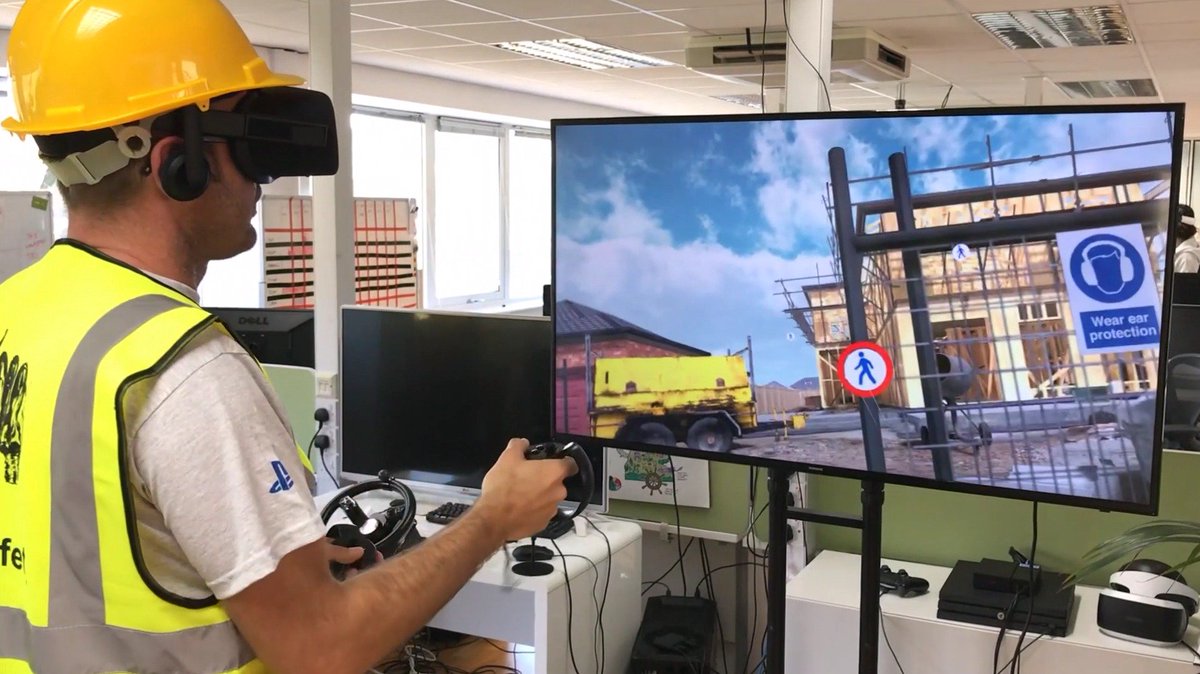
VR trains employees in a safe & controlled environment
Healthcare
Healthcare is another sector where VR is being put to practical use. Its ability to transport the viewer to an alternate reality is particularly powerful when aiding those who suffer from psychological fears and the traumatic memories that come with PTSD. By recreating certain scenarios that would be impossible otherwise, therapists can help to support individuals in overcoming these. The same can be said for physical therapy, where VR has been proven to speed up recovery time as it allows the patient to act out their prescribed exercises in a more fun and focused environment.
VR is also being used in the operating theatre to train surgeons and other healthcare professionals. 360° CGI reconstructions of the inside of the human body allow access to areas that otherwise would have been impossible to learn about, whilst training scenarios allow students to experience difficult surgical procedures without the high levels of risk.
To learn more about the huge potential for VR in this sector – from medical marketing to virtual surgery – head over to our VR in Healthcare industry page.

Education
To continue engaging young minds in the classroom, many educational institutions are beginning to explore the practical use of VR in this setting.
One of the most notable difficulties that arises when it comes to teaching is the need to take children on school trips to help support their learning. However, these outings can be costly and time consuming to arrange. In place of these conventional ‘field trips’, VR can transport pupils to the same locations, such as exhibitions and historic landmarks, without ever leaving the classroom.
VR can also be employed to bring historic events to life and add a deeper layer of understanding by immersing the students in 360° experiences and demonstrations. They can develop their creative skills through apps such as Oculus VR’s Tilt Brush and Gravity Sketch while the social platform element of VR allows for students to extend their learning beyond the walls of the classroom and communicate with other students all over the world.
To learn more about VR in Education, have a read of our blog post on Education and VR: 5 examples of bending reality to enhance learning.
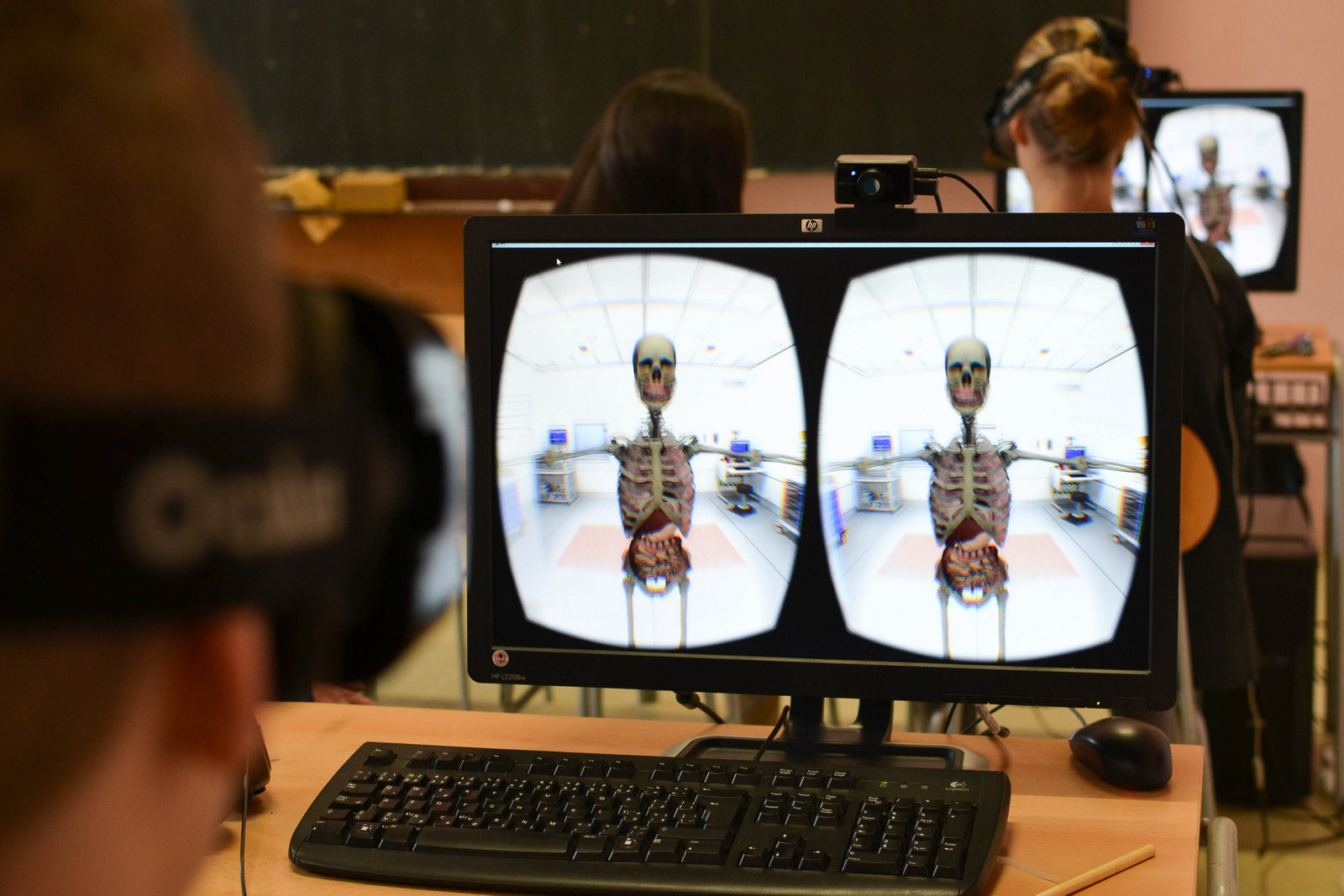
Virtual Reality is being applied in education to help inspire young minds
Manufacturing
VR is also being applied in the engineering and manufacturing sectors because of its ability to give individuals 360° demonstrations of products in a virtual, hazard-free environment.
These industries are employing VR to help in the design and manufacturing process by using Virtual Manufacturing (VM). Through the use of computer models, teams can view product designs in a 360° setting and therefore analyse, adjust and improve a product before it is made. This application of VR is both time and cost effective because it tests that every element of a product, process or mechanism is suitably designed and operates appropriately before manufacturing commences. The risk-reduced environment also ensures that every simulation and process is performed safely.
One of the most notable benefits of using VR in manufacturing is that it removes the difficulties and complications that comes with creating huge physical prototypes. It is for this reason that sectors such automotive and architecture are choosing to follow this route.
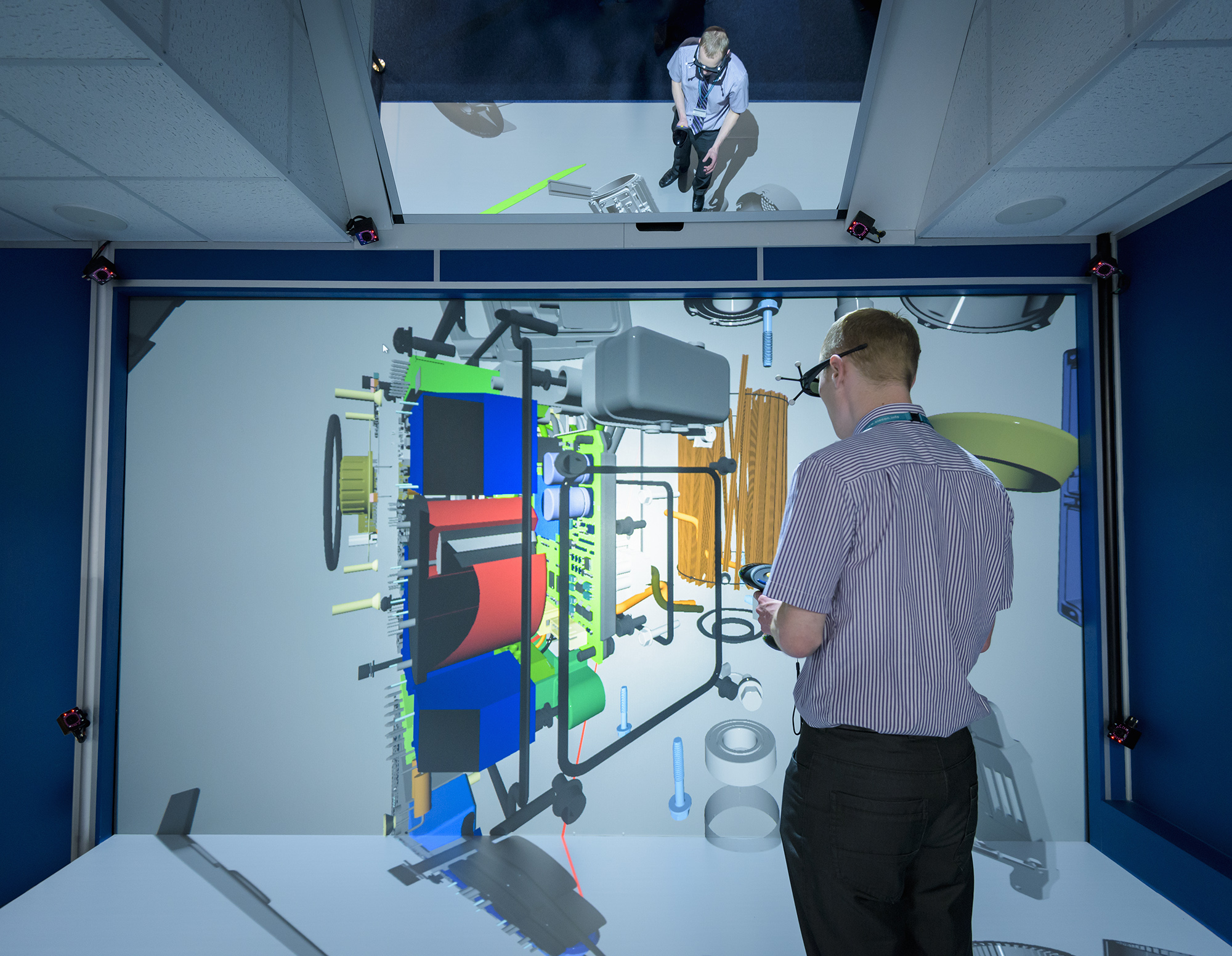
Siemens is using VR to simulate and optimise its assembly process

Comments